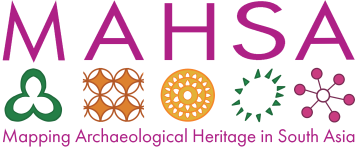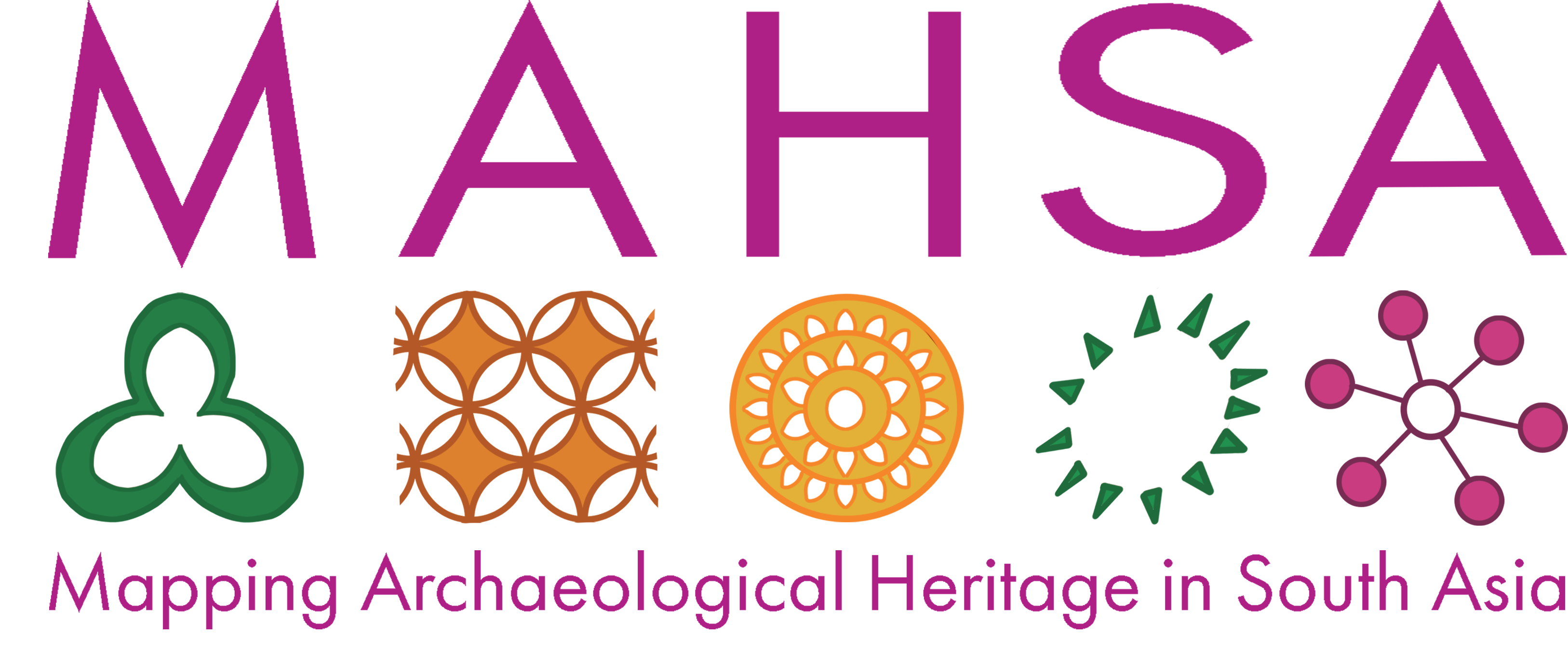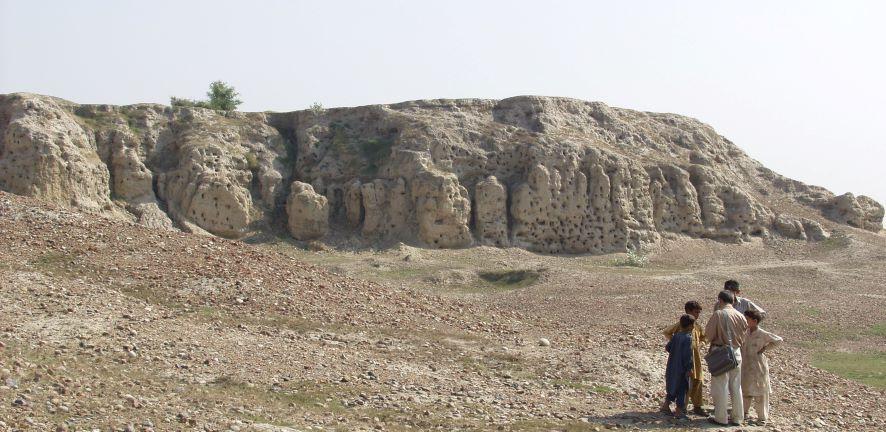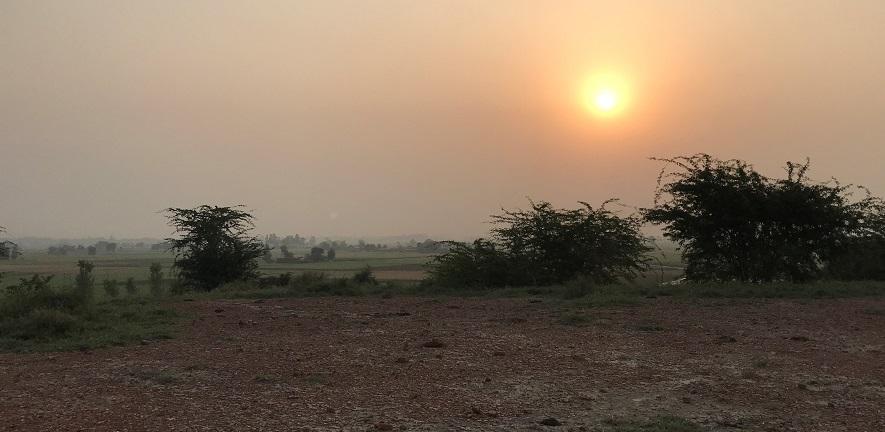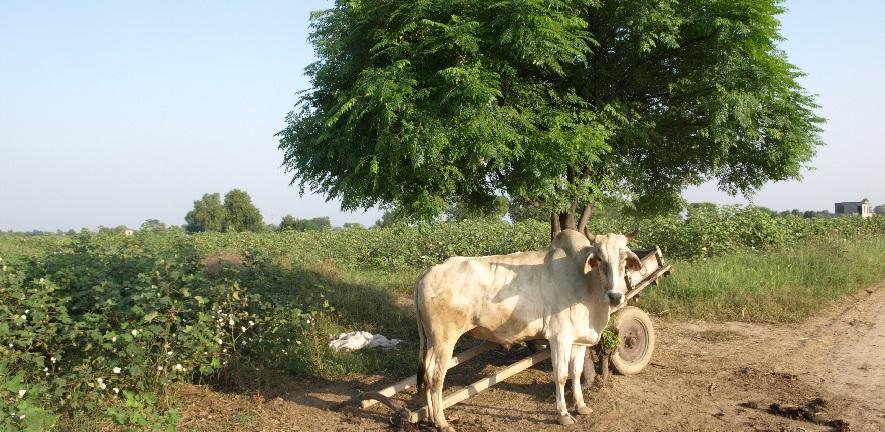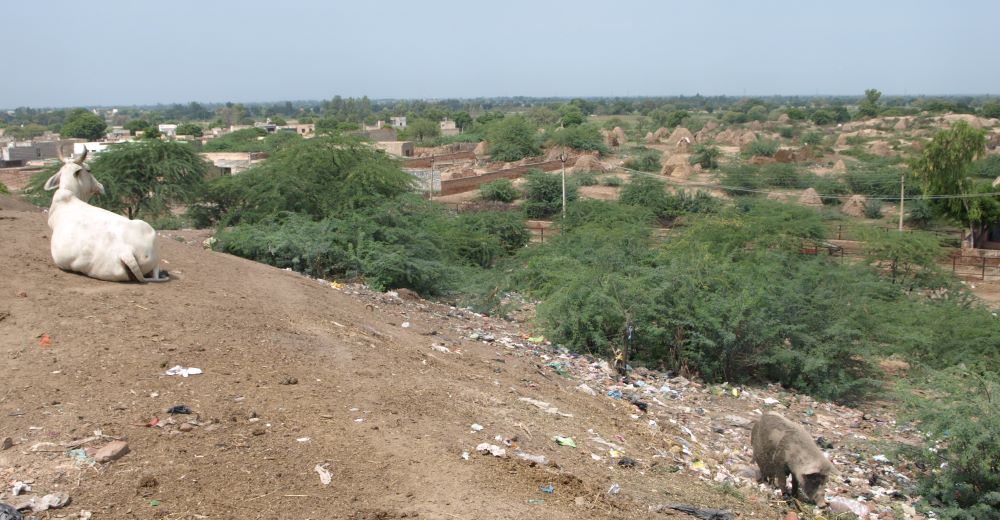The landscapes of India and Pakistan guard histories that are vulnerable to time and change. Discovering, documenting and disseminating knowledge of archaeological heritage at danger will help to protect it for the future.
Why is this important?
The ground beneath our feet is continually transforming under the influence of human activity and nature. Thousands of archaeological sites face threats that could break the chain of knowledge with both our near and distant past.
Archaeological mound, Rakhigarhi, Haryana, India.
Why now?
The need to detect and monitor endangered archaeology and cultural heritage has never been more urgent, given increasing pressures from urban expansion and agriculture. Government agencies and other stakeholders need to be able to monitor, predict and, where possible and necessary, intervene to prevent irreversible losses.
What is the MAHSA project doing?
The project team and partners are carrying out remote identification of cultural heritage sites that could be at risk today and in future in the Indus River Basin and surrounding regions. We are combining planetary-scale satellite imagery and machine learning to explore new, sustainable solutions for the management of archaeological heritage.
What will the outcomes be?
At the heart of the project is the aspiration to create a sustainable management database for local heritage stakeholders. With this in mind, data will be published in a collaborative, open access Arches geospatial database, designed to serve as a primary mapping resource and research repository for archaeological and endangered cultural heritage of the region.
Who is involved?
MAHSA is generously supported by Arcadia, which is a family charitable foundation. The project is hosted by the McDonald Institute for Archaeological Research, University of Cambridge, in partnership with the Catalan Institute of Classical Archaeology (ICAC) and Universitat Pompeu Fabra, Barcelona (UPF), and will also form close collaborations with relevant bodies and heritage professionals in Pakistan and India.
Photos: C.A. Petrie (Bala Hisar 2006, Ajnala 2018, Masudpur 2018, Rakhigarhi 2018).

